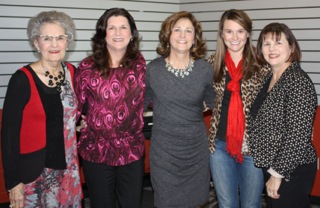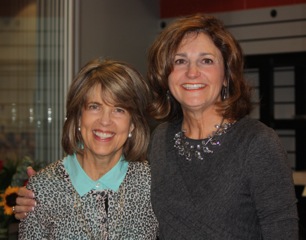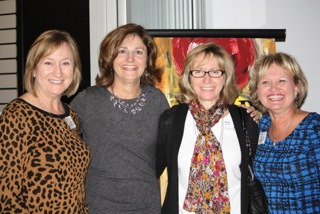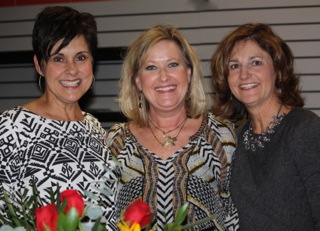As I was contemplating writing a blog post on intimacy and Valentine’s Day and discussing the ideas with a friend, she told me of the Peruvian tradition of celebrating Feliz Día de Amistad y Amor (Happy Day of Friendship and Love) where the emphasis is as much on love in a friendship way as it is in a romantic way. After hiking Machu Picchu Peru last fall with my husband and a team with Above and Beyond Cancer, we fell in love with Peru—the culture, the people, and our new friends Carlos and Aguido. Thus this February Calendar is inspired by the custom of Feliz Día de Amistad y Amor! Perhaps these keys to unlocking the door to the intimacy of friendship will open your heart to the possibility of listening more deeply to your own heart—to trust and honor that deep part within you that desires to know others and to be known.
What are the keys to unlocking the door to intimacy of friendship? What is a deep relationship? How do we get there? How do we handle hurt and betrayal? Why do relationships seem so hard sometimes? Why do we feel alone? What is it about this incredible desire for connection? How do we begin the conversation? How do we trust? What relationship is calling us to go deeper? What do I need to let go of to have space to invest in relationship? Why does it take so much courage? What does self-compassion have to do with relationships? What is intimacy in friendship? The “locked doors” before us can seem endless, but every lock has a key. Let’s look at some.
Key 1 – Understanding intimacy
We desire connection. Intimacy is defined as closeness—the kind of closeness that allows and encourages vulnerability. One of my favorite family pictures is a shot taken from the back that depicts my Dad and his two brothers quietly gazing out onto the lake where our family cabin is located. There was not a lot of conversation at the moment—but there is a palpable closeness, an intimacy, of brothers sharing parents, sharing history, sharing a lake cabin, sharing a quiet moment together, all of which was captured in the picture. Words are not always necessary for intimacy.
Friendship is the comfort, the inexpressible comfort of feeling safe with a person having neither to weigh thoughts nor measure words but pouring all right out just as they are chaff and grain together, certain that a faithful friendly hand will take and sift them, keep what is worth keeping and with a breath of comfort, blow the rest away. – George Eliot
Thought to ponder – How can I move towards someone? What would closeness look like in a current relationship?
Key 2 – Conversation and Curiosity
Sometimes in February when teaching a workshop I will use the little candy conversation hearts with words printed on them as an exercise: Out of the random hearts selected, we try to form a coherent sentence. The experience often gives way to hilarious laughter.
But the point of the exercise is much deeper: What is a meaningful conversation, and how can I help create one? How can I be curious about you and get to know you by asking questions? We are often hesitant to ask others questions, but the reality is that most of us like to be known and heard. Caring friends converse in a caring way.
A connection is the energy that exists between two people when we feel seen, heard, and valued; when we can give and receive without judgment and when we derive sustenance and strength from the relationship.
- Dr. Brené Brown
Thought to ponder: What was a significant conversation that I had with someone this week? What makes that conversation notable? What makes it different from the casual conversations I’ve had recently?
Key 3 – Listening
Deep listening is such a gift we can give someone. The times when we can listen intently without distractions and without being preoccupied with what our response will be are deeply meaningful gifts that last far beyond the time of the conversation. To fully listen and ask deeper questions opens up space in the heart for growth, empathy and understanding. It prepares the way for deeper, richer friendships and intimacy.
“Being heard is so close to being loved that for the average person, they are almost indistinguishable.” - David Augsburger
Thought to ponder: What is a time you felt truly listened to? How did that experience make you feel?
Key 4 – Shared Experiences
Spending time doing things together is such an essential component of healthy relationships. At times, distance separates us from participating in the activities we enjoy together, but there are creative ways to create new experiences long-distance. Maybe it’s as simple as coordinating a Skype or FaceTime chat to experience an occasion together. The little things, the everyday conversations, the meals shared, the trips together, the games played together, even the plans that fall apart…these are all moments of connecting and creating memories together.
Friendship is unnecessary, like philosophy, like art.... It has no survival value; rather it is one of those things which give value to survival.
-C. S. Lewis
Thought to ponder: What is a dream of a shared experience with a particular friend? What can I do to make that dream become a reality?
Key 5 – Pain
Experiencing pain together can be a profoundly bonding experience. Even something as simple as camping or traveling together can produce some uncomfortable moments than can serve as bonding experiences. More serious pain, the tragedies and the griefs we all encounter, can spark friendships and cement permanent bonds when we share that pain together. Often it’s in our deepest pain and grief that we recognize and appreciate the beauty of friendship.
The wound is the place where the Light enters you.
– Rumi
Thought to ponder: Who is in pain, this very day, that I could reach out to and share their pain?
Key 6 – Time
Friendships take time. Maybe it is the beginning of a friendship and we are spending time together in learning about one another and developing memories. Maybe if we’ve been friends for years, there is the effort, energy and time required to continue to connect and participate in one another’s lives in a meaningful way. Time is one of the most precious commodities that we have, so to be intentional and cherish the time with friends is a practice that is enriching to the landscape of our lives.
Make new friends, keep the old
One is silver, the other is gold.
Thought to ponder: Who is a silver friend for you? Who is a gold friend? When is the last time you’ve shared a meaningful connection with your silver and gold friends?
Key 7 – Courage
Why is it that reaching out for a bid for connection with others can take so much courage? I recently attended a conference where I knew few people. It takes courage to reach out to complete strangers. One of the greatest gifts of the workshop was the connections that came from the intentional and courageous “reaching out” to others over the week. Even in everyday life with familiar people, have we reached out to a co-worker, a neighbor, a family member, a friend? We can simultaneously hold our hesitations and our intentions to reach out. We can walk forward in courage with open hands and open hearts.
Our greatest glory is not in never failing –
but in rising up every time we fall.
- Ralph Waldo Emerson
Thought to ponder: If I could be “gifted” an extra dose of courage, what would it look like in my friendships?
Key 8 – Self-Compassion
What does it look like if we can speak to ourselves as we speak to our friends? What would it feel like if we were able to calm ourselves by repeating a mantra? A phrase or blessing I often tell myself is, “May I be deeply and radiantly beautiful.” The idea of radiating love and beauty both to myself and to others is a calming, empowering, and self-compassionate statement. Actively loving myself as I would love others is a practice worth developing.
We cannot change the world by a new plan, project or idea. We cannot even change other people by our convictions, stories, advice and proposals, but we can offer a space where people are encouraged to disarm themselves, lay aside their occupations and preoccupations and listen with attention and care to the voices speaking in their own center.
-Henri Nouwen
Thought to ponder: What act of self-compassion could strengthen me this week?
Key 9 – Laugh Together
Laughing together is one of the greatest privileges of relationships. To look at life through a lens of play, joy and a spirit of laughter is a healthy perspective—and just plain fun. I love the quote that says, “A joy shared is a joy doubled. A sorrow shared is a sorrow cut in half.” Isn’t it beautiful that as we laugh, there is a contagious spirit of fun and lightheartedness, a spirit that invariably draws people together?
To laugh often and much, to win the respect of intelligent people and the affection of children; to earn the appreciation of honest critics and endure the betrayal of false friends; to appreciate beauty; to find the best in others; to leave the world a bit better, whether by a healthy child, a garden patch or a redeemed social condition; to have played and laughed with enthusiasm and sung with exultation; to know even one life has breathed easier because you have lived—that is to have succeeded.
-Ralph Waldo Emerson
Thought to ponder: If I were to choose to share joy and laughter with a friend this week, who would it be?
Key 10 – Acceptance
One year I made it my intention to stop judging others. Admittedly, it was more than a yearlong process—actually, I think it’s more of a lifelong project. But the beauty that comes forth as we release judgment and reach out to accept others, just as they are, is a gorgeous kaleidoscope of love that opens up our awareness and brings compassion into the world. What a gift—I accept you just as you are. Will you please accept me, just as I am?
When we judge people, we have no time to love them.
– Mother Teresa
Thought to ponder: What might change if you accepted how you are in a particular situation? If you were able to accept how your friend was in a particular situation? If you really were okay with it?
Key 11 – Intention
One of the key ways I discern how my values are matching up with my actions is to take a close look at my intentions. Why am I taking homemade cookies to the new neighbors? What’s my true intention? Do I want them to think I’m nice? Do I want them eventually to feed our dog or shovel our snow when we are out of town? Do I do it because my Mother always took cookies to the new neighbors? When we can reflect and discern the true intention of what we are doing, we are learning a new layer of our heart and cultivating honesty and courage in the process. Strong, lasting friendships need intention—a strong plan—to help nourish the relationship.
Intention is not just about will but about our overall everyday vision, what we long for, what we believe is possible for us. If we want to know the spirit of our activities, the emotional tone of our efforts, we have to look at our intentions.
- Sharon Salzberg
Thought to ponder: How can I be intentional in strengthening, fertilizing, and cultivating deeper friendships in my life?
Key 12 – Honesty
Honesty is one of the most important qualities in a relationship. We must send each other accurate messages and receive accurate responses. “Getting to know one another” includes both good and bad feelings, frustrations, fears, problems—anything that is on our minds and hearts. By telling the truth in a friendship, we are building emotional stability—a foundation for a quality friendship.
“When we honestly ask ourselves which person in our lives mean the most to us, we often find that it is those who, instead of giving advice, solutions, or cures, have chosen rather to share our pain and touch our wounds with a warm and tender hand. The friend who can be silent with us in a moment of despair or confusion, who can stay with us in an hour of grief and bereavement, who can tolerate not knowing, not curing, not healing and face with us the reality of our powerlessness, that is a friend who cares.”
― Henri J.M. Nouwen
Thought to ponder: In what areas is it difficult for you to be totally honest in your relationships?
Key 13 – Empathy
In teaching workshops, I often teach Theresa Wiseman’s four defining attributes of empathy: 1) to be able to see the world as others see it 2) to be nonjudgmental 3) to understand another person’s feelings and 4) to communicate your understanding of that person’s feelings. Empathy is an incredibly powerful aspect of any relationship. It allows us to perceive another’s wound and to reach out and touch the place in someone’s heart that needs tender attention.
Not so much to be loved as to love,
not so much to be consoled as to console,
not so much to be understood as to understand.
St. Francis Prayer
Thought to ponder: How can I “see” and understand others in a fresh and deepening way?
Key 14 – Presence – being there – being together for one another
There is no greater gift than being fully present with one another. We are often tempted to multi-task—make a phone call, jot down a quick list, concern ourselves with our response to their conversation. Being intentional about being present in the moment is a practice that takes consistent effort. Our minds quickly wander even amidst conversations with others. The value of the gift of presence is priceless.
Making Contact
I believe
The greatest gift
I can conceive of having
from anyone
is
to be seen by them,
heard by them,
to be understood
and
touched by them.
The greatest gift
I can give
is
to see, hear, understand
and to touch
another person.
When this is done
I feel
Contact has been made.
-Virginia Satir
Thought to ponder: How can I be present in a new way with a friend? What do I need to set aside so that I can focus on this friendship at this very moment?



















